Church of Agios Afxivios
The church of Saint Afxivios
When the church was built in 1875, it was placed almost outside the village and far away from the houses of the inhabitants as the people were afraid to live close the church. Nowadays, the village is expanded and due to the restricted land, the inhabitants started building their houses near the church. Thus, the church is now surrounded by many houses.
It is a big Basilica and its accommodation is 300 people. The church is made of stones and its color is grey. It was recently renovated and painted. The yard is big, cemented and it has fencing. The old bell tower was demolished and a new one was built with three electronic bells.
Some wall paintings were made lately inside the church. The paintings depict Panagia Platitera and all the hierarchs. The iconostasis is very old but in very good condition. It is one out of three of its kind in Cyprus. On the iconostasis there is a depiction of vineyards. The other two iconostasis are in Akanthou and in the monastery of Machairas.
Above the iconostasis, there is a zone of miniatures, the so-called festal-cycle, and some other miniatures of several saints.Above the miniatures, there are 19 silver lamps which were donated by the inhabitants of the village.
The despotic throne and the pulpit have the same depiction with the iconostasis. The two psalters are wooden and are recently made. The church celebrates mass every day.
The feast day of Saint Afxentios is on 17th February and 17th September.
The icon which is dedicated to the Saint was made in the 17t century and is kept in a special case on the west side of the church.
HIS LIFE
Saint Afxivios was originated from Rome. His parents were very rich but they were idolaters. He had another brother, Themistagoras. When he grew up, his parents found the best professors in order to educate him. They also wanted to find him a woman to marry him. Despite his parents insistence, Afxivios did not accept because he wanted to become Christian. Thus, he decided to leave Rome and he begun a big trip having no money with him.
Some days later he came in Cyprus, in Limnitis, which was 4km far from the town Solon. He met Apostle Marcus and told him that he wanted to become Christian.
So, Apostle Marcus catechized Afxivios and baptized him. He has also made him bishop and sent him in the town of Solon giving him some instructions: not to reveal that he was a Christian and pretend the idolater, as all the inhabitants in the town were idolaters. He also asked him to approach people and catechize them. The Saint went there and stayed in the house of the priest of the temple of Zeus, outside the city. When the priest asked him where he came from, the Saint told him that he came from Rome and his destination was Palestine, but he heard about the town of Solon and decided to stay there. He pretended the idolater to the priest and after a while he managed to make him Christian. For a long time, Afxivios taught Christianity without revealing his identity.
Some time later, Apostle Paul learnt that Apostle Varnavas has died in Salamina and that there was not a bishop in the area. So, he asked the archbishop of the island, Irakleidis, to place Afxivios in the position of the bishop.
Afvixios had accepted the position and begunimmediately the construction of a church in the area. Then he taught in public and tried to catechize more people. Afxivios could heal ill people and dismiss demons thus every day more and mor people visited him in order to listen to him or ask him to heal them.
A young man who lived in a small vicinal village asked the Saint to teach him the speech of God. His name was also Afxivios. He served his master faithfully and the Saint was convinced that this man could take his place some day.
The Saint’s brother, Themistagoras, and his wife came in Cyprus and he became a deacon. Saint Afxivios managed to christianize almost all the people in the city and he was urged to build another bigger church.
When he felt that he would die he invited his clergy and asked them to continue his work. Then, he told Afxivios that he would replace him after his death. His death has caused pain and sadness to the Christians of the area. His relic was considered thaumaturge.
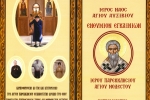
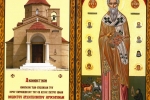
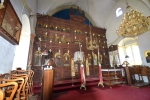
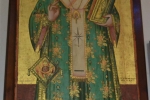
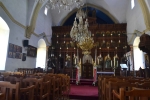
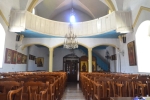
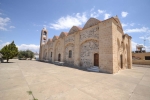
Chapel of Agios Modestos



